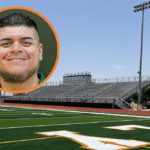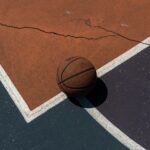During football season, it’s not unusual to read about a teenage football player collapsing several weeks after suffering a concussion. Afterward the athletic director may learn that the player returned to competition claiming no symptoms, when in fact he continued to experience headaches but told no one because he was afraid of missing playing time. Or the athletic director may walk into the principal’s office with an advertisement for a coach-administered computer-based program promoting neurocognitive testing of athletes. He or she may tell the administrator how important it is to have baseline data before returning a player to competition after a head injury. How should the manager of an educational institution deal with the potentially life-threatening consequences of head injury?
The athletic director can take several steps to make sure that coaches and staff members are prepared to respond to concussions:
- At the beginning of every season, the school’s team physician should present an in-service program for coaches and athletic event staff about recognizing the observable behaviors and student-reported symptoms that are signs of concussion. Most important, the team physician is responsible for sending a clear message: “When in doubt, sit the athlete out!” Such in-service programs recognize the fact that a certified athletic trainer or team physician is not in attendance at every practice and emphasizes the school policy directing staff to err on the side of student safety.
- On the issue of whether a school should have protocols for baseline concussion testing or neurocognitive evaluation in response to suspected concussions, the answer is yes, and most athletic governance organizations have rules and many states have laws that detail such concussion protocol mandates. Such testing programs should be administered by a certified athletic trainer, a physician, or other qualified personnel and never by a coach. The coach will always be in a conflict-of-interest position and thus should not be involved in athlete treatment, testing, or the decision to return an athlete to play after a concussion, which may very well rely on comparisons to such baseline data. Although the coach plays an important role in recognizing behavioral symptoms or listening to an athlete describe his or her symptoms, assessments of physical condition and decisions to return from injury rightfully belong to trained certified medical or athletic training personnel.
- The decision to return to competition should not depend solely on athlete-reported symptoms because the athlete also has a conflict of interest. Research demonstrates that athletes underreport their conditions because of a desire to return to competition (Conway et al., 2020). Although athlete reporting plays a role, neurocognitive testing must ultimately guide any such decision.
- Following a concussion, the athlete should be referred to a physician for medical evaluation, on the same day as the injury if any of the following occurred: loss of consciousness; amnesia lasting longer than 15 minutes; vomiting; motor, sensory, or balance deficits; or symptoms that worsen. Immediate transport to the hospital emergency room should occur in the case of pulse or respiration irregularity or decreases; unequal, dilated, or unreactive pupils; lethargy; confusion; seizures; and other symptoms. All these operating rules should be covered in the physician education program at the beginning of the season and be given to coaches and staff in writing. Clear protocols for responses to concussion must be communicated to coaches and staff.
- The school should have conservative policies in place to deal with athletes who suffer repeated concussions, from removal for the rest of the game to disqualification from participation for the rest of the season to complete disqualification from participation in contact sports. These policies should be established in consultation with a physician and be based on continuation of symptoms, repeated concussions, and other physician-determined factors.
- Policies should exist that require a physician or certified trainer to give oral and written instructions to parents regarding home care after an athlete suffers a concussion, especially with regard to ingesting alcohol, drugs, or other substances that affect cognitive functioning.
One of the best resources for the athletic director and school administrator is the Consensus statement on concussion in sport—the 5th international conference on concussion in sport held in Berlin, October 2016 (McCrory, 2016) and the NCAA Sports Science Institute’s collection of concussion resources (NCAA, 2021).
In summary, responsible handling of concussions means
- assessment of neurocognitive baseline data by qualified personnel,
- adequate preparation of on-the-field staff in symptom recognition and conditions for emergency treatment versus physician referral,
- oral and written communication with parents and caregivers regarding home care of the athlete following a concussion, and
- conservative decisions about returning to play only after qualified medical personnel are sure that the athlete is symptom-free.
This is an excerpt from Athletic Director’s Desk Reference 2nd Edition With HKPropel Access by Donna A. Lopiano & Connee Zotos, published by Human Kinetics. Donna A. Lopiano, PhD, is president of Sports Management Resources, a consulting firm that draws on the knowledge of experienced former athletic directors to assist scholastic and collegiate athletic departments in solving challenges in growth and development. She served for 18 years as the director of women’s athletics at the University of Texas at Austin and is a past president of the Association for Intercollegiate Athletics for Women. During her tenure at the University of Texas, she built what many believe to be the premier women’s athletic program in the country, twice earning the award for top program in the nation. Connee Zotos, PhD, has over 38 years of experience in scholastic and collegiate athletics as a basketball and field hockey coach, Division II and Division III athletic director, and professor. Zotos served as the director of athletics at Drew University and William Smith College and director of women’s athletics at Philadelphia College of Textiles and Science. She has published numerous articles in refereed and nonrefereed journals and is a noted speaker and author on tiered funding models in collegiate athletics, coaches’ employment and compensation packages, coach evaluation systems, and gender equity in sport.










